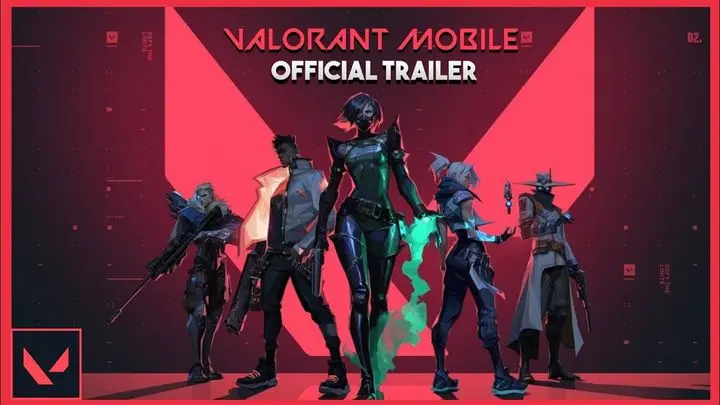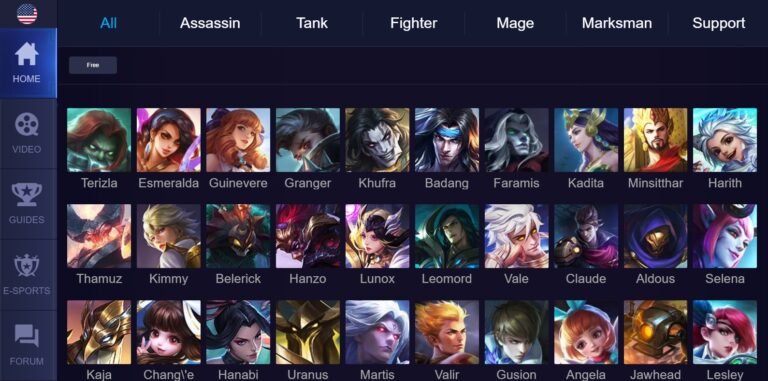
Introduction to Valorant
Valorant is a tactical first-person shooter (FPS) developed and published by Riot Games, known for its successful title League of Legends. Released on June 2, 2020, the game quickly garnered a significant player base and acclaim for its innovative gameplay. Valorant combines precise gunplay with unique character abilities, offering a distinct experience compared to traditional shooters.
At its core, Valorant involves two teams of five players who compete in various objective-based game modes, primarily centered around planting or defusing a bomb. Teams alternate between attacking and defending, which tests both individual skill and collective strategy. Each character, known as an “Agent,” possesses distinct abilities that can influence game situations, adding a layer of tactical depth that is often absent in conventional shooters.
What differentiates Valorant from its peers is its emphasis on team play and coordination. The blend of character-specific skills with standard shooting mechanics creates opportunities for strategic planning and execution. Players must not only focus on their aim and reflexes but also coordinate with teammates, leveraging their unique abilities effectively. This fosters a highly competitive environment where strategic depth is paramount.
The game’s design encourages a high level of communication, as players must call out enemy positions and collaborate to maximize their team’s potential. Additionally, the importance placed on map control and tactical positioning further contributes to the immersive experience of Valorant. Players are not only confronting enemy gunfire but are also navigating the complex interplay of abilities that can turn the tide of battle in an instant.
In summary, Valorant stands out in the world of first-person shooters by seamlessly integrating character abilities with traditional gameplay mechanics, appealing to both competitive gamers and casual players alike. Its focus on teamwork and strategy ensures that each match is a unique blend of skill, coordination, and tactical prowess.
Game Mechanics and Features
Valorant, developed by Riot Games, is a tactical shooter that intertwines traditional gameplay mechanics with unique features that set it apart in the genre. At its core, the game revolves around the selection and utilization of diverse agents, each equipped with distinctive abilities that can reshape the battlefield. These abilities allow players to execute strategies that go beyond simple shooting, encouraging creativity and teamwork. Understanding the strengths and weaknesses of each agent is crucial, as it enables players to devise synergistic combinations that enhance their overall effectiveness during matches.
The weapon system in Valorant is another critical component that influences gameplay. Players can choose from a variety of firearms, ranging from rifles to sidearms, each offering different damage outputs, recoil patterns, and price points. The economy system governs how players acquire weapons and abilities, introducing a layer of resource management that requires strategic planning. Successful teams must not only secure kills but also make sound financial decisions to ensure they remain competitive in future rounds. This economic aspect of Valorant promotes careful investment in resources, creating a dynamic environment where every decision can impact the match outcome.
Effective communication is vital in Valorant, as it enhances teamwork and strategy execution. Players must relay information regarding enemy positions, agent abilities, and potential strategies in real time. This synergy among teammates can lead to significant tactical advantages, allowing for coordinated attacks and defenses that can catch opponents off guard. In summary, the combination of unique agent abilities, a robust weapon system, a challenging economy, and the importance of communication collectively contribute to Valorant’s immersive tactical shooter experience, marking it as a game that demands not only skill but also strategic thinking.
The Competitive Scene
Valorant has rapidly established itself as a prominent title in the competitive gaming landscape. At its core, the competitive structure of Valorant is designed to encourage strategic gameplay and teamwork. The ranking system, which ranges from Iron to Radiant, is integral to this framework, providing players with a clear progression path based on their performance in ranked matches. To climb the ranks, players must demonstrate a combination of skills, including accurate shooting, tactical decision-making, and effective communication with teammates.
In addition to the individual ranking system, Valorant features several competitive play structures that facilitate organized matches. The game’s competitive mode allows players to engage in 5v5 matches, where teamwork is essential to secure victory. Players can participate in placement matches at the start of each act, which helps determine their initial rank for the season. Successful gameplay not only depends on individual skill but also on how well players can coordinate with their team to execute strategies against opponents.
The esports scene of Valorant has evolved significantly since its launch, with numerous tournaments showcasing the top teams and players from around the world. Prominent events, such as the Valorant Champions Tour, have attracted massive viewership and provided a platform for talented players to display their skills on a global stage. Teams like Sentinels, Fnatic, and Team Liquid have become household names, contributing to the rich competitive culture within Valorant. Additionally, players are continuously raising the bar, with their gameplay influencing new strategies and tactics.
To foster growth within the community, various resources are available for new players aiming to enhance their competitive skills. Tutorials, guides, and community forums offer valuable insights into gameplay mechanics and strategies, enabling aspiring players to adapt and succeed in this dynamic environment. The supportive nature of the Valorant community plays a significant role in encouraging the next generation of players to step into the competitive arena, ensuring the game’s vitality for years to come.
Community and Updates
The community surrounding Valorant has become a vital component of its ongoing success. Players around the globe engage in discussions, share strategies, and create content that enhances the overall gaming experience. One of the key elements in maintaining this vibrant community is the consistent flow of updates from the developers. Riot Games, known for its commitment to player feedback, regularly incorporates suggestions and ideas gathered from players to improve the game. This ensures that the changes resonate well within the community and provide a balanced gaming experience.
Content creation plays a significant role in fostering community engagement. Players stream their gameplay on platforms like Twitch and create video content on YouTube, showcasing their skills, tips, and tricks. This sharing of knowledge not only entertains viewers but also helps newer players understand the intricacies of Valorant. Additionally, community events, such as tournaments and challenges, encourage players to come together, compete, and celebrate their shared passion for the game.
Social media platforms have also become a key aspect of Valorant’s community landscape. Developers utilize these channels to communicate directly with players, announce updates, and highlight community achievements. Through effective use of social media, users can stay informed about balance changes, new agent introductions, and seasonal events, further optimizing their experience. These continuous adjustments ensure that the game remains fresh and engaging, drawing players back for new content and challenges.
Valorant’s developers understand the significance of game balancing in sustaining player interest. Regularly updating weapon mechanics and agent abilities allows for a dynamic environment in which strategies evolve over time. In this way, the community remains involved and invested in Valorant’s growth. By prioritizing player feedback and fostering a rich community atmosphere, Riot Games effectively maintains a thriving realm for both casual and competitive players alike, ensuring that Valorant remains a compelling, tactical shooter for everyone.




